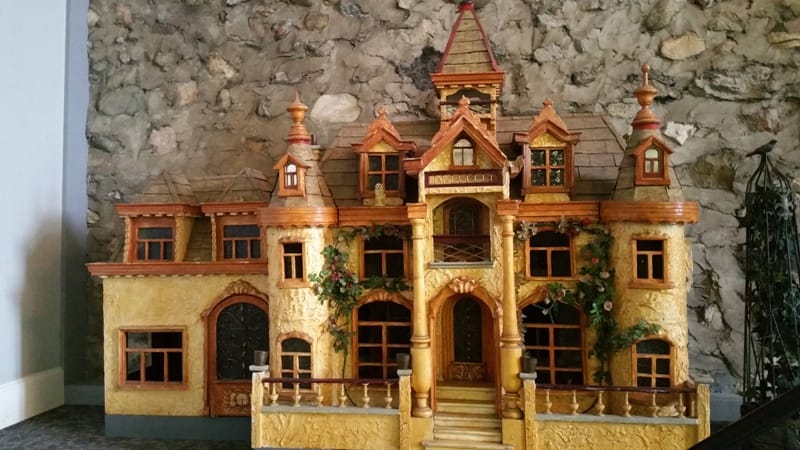In 2010, while visiting an area antique store, Castle Farms owner Linda Mueller saw and immediately fell in love with the Castle dollhouse. “If you can find a place for it, I’ll buy it for you,” her husband Richard offered. “I already know the exact spot where to put it,” Linda said. Two days later, the dollhouse arrived at the Castle.
 The Castle dollhouse dates back to the late 1890s-early 1900s. An unknown French artisan was commissioned by a wealthy aristocrat to create the piece. In the late 20th century, an American importer visiting France happened across the dollhouse at a local flea market. On a whim, he purchased it for his young children, and it was shipped to America. Years later, the importer decided to sell the dollhouse. His brother, a local antique dealer, purchased the dollhouse and kept it for a number of years before its purchase by Richard Mueller.
The Castle dollhouse dates back to the late 1890s-early 1900s. An unknown French artisan was commissioned by a wealthy aristocrat to create the piece. In the late 20th century, an American importer visiting France happened across the dollhouse at a local flea market. On a whim, he purchased it for his young children, and it was shipped to America. Years later, the importer decided to sell the dollhouse. His brother, a local antique dealer, purchased the dollhouse and kept it for a number of years before its purchase by Richard Mueller.
The Castle dollhouse, a true scale image of a noble French castle, invites one’s imagination. A royal Fleur-de-lis (symbol of French nobility) decorates the front entry. Latticed windows beg a peek inside. The lover’s balcony, positioned on one side, is a secluded retreat. Owls (note the owl perched atop one of the balustrades) were considered by the French to be of great nobility. Everything about the Castle dollhouse denotes a miniature royal residence.
Dollhouses date back as far as Egyptian times, though their true popularity began in the 1700s. European royalty and aristocrats commissioned individual dollhouses as a means of portraying art and decoration. Dollhouses were normally crafted only by famous artisans, and might take years to complete. They were never meant to be used as toys, but rather, were replicas of real life. Dollhouses were symbols of status and prestige, and were often on display at various palaces throughout the courts of Europe and beyond.
The Castle dollhouse can be found to the left of the grand staircase leading upward from the King’s Gallery to the King’s Great Hall Foyer above, where it remains on permanent display.
“For now, it’s safely tucked away where it is. It’s positioned with its back to the wall, which is something I did on purpose,” Linda says with a laugh. “I know myself too well. If the Castle dollhouse was someplace I could easily get to, I’d always be buying more toy furniture and constantly rearranging it.”






